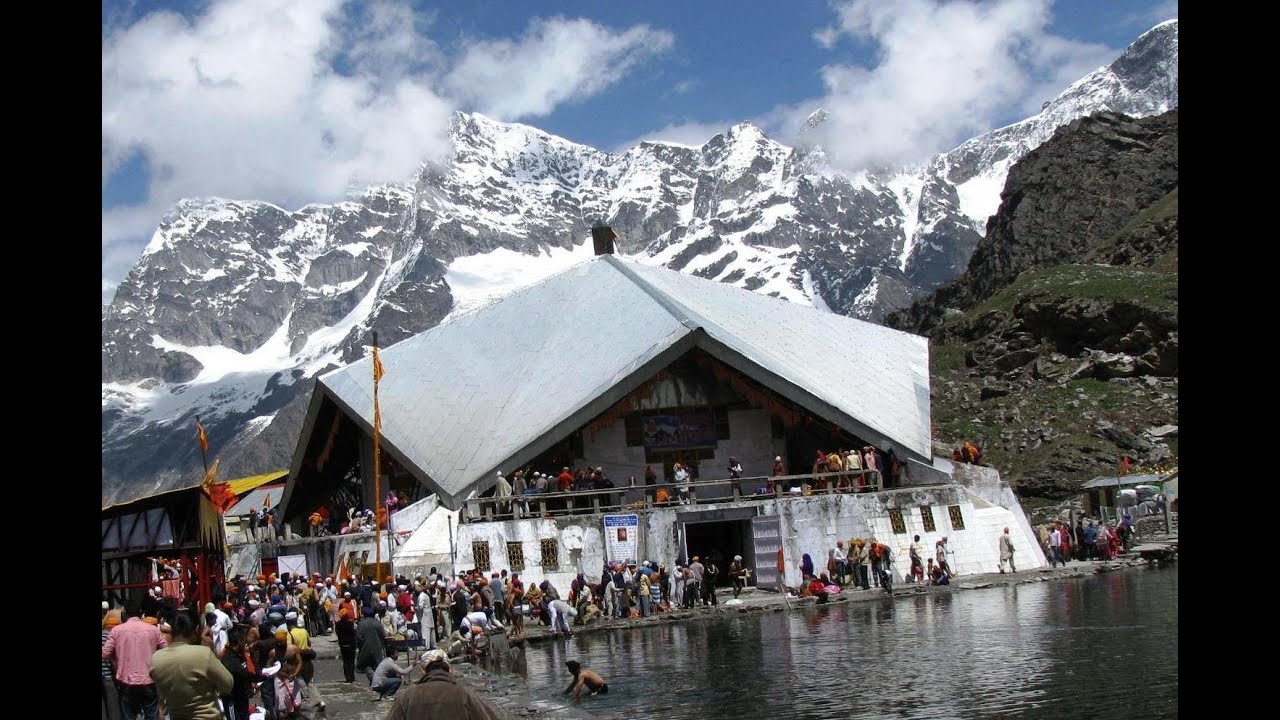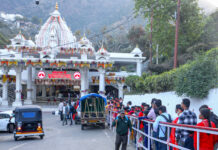Hemkund Sahib, also known as Gurudwara Sri Hemkund Sahib Ji, is a Sikh place of worship and pilgrimage site in Uttarakhand, India. The Gurudwara is devoted to Guru Gobind Singh Ji (1666–1708), the tenth Sikh Guru.
The place is earlier known as Lokpal. According to folklore, Lakshmana (from Ramayana) was at the shore of the Lokpal after being wounded by the Meghnad, son of Ravana. When Hanuman brought medicine for him and Lakshmana gained conscious, God showered the flowers from heaven which get rooted in the Valley of Flowers.
The picturesque natural settings make this hill region a fantastic place for rejuvenating vacations. The journey to Lokpal lake is a challenging but exciting and enjoyable trek.
Nature reflected here with all its mighty appearance in the crystal clear alluring water. Hemkund Lake is surrounded by the glaciers from majestic peaks known as Hathi Parvat and Saptrishi peaks. A small stream known as Himganga originates from this imposing lake.
With its setting of a glacial lake surrounded by seven mountain peaks, each adorned by a Nishan Sahib on its cliff, it is according to the Survey of India located in the Himalayas at an elevation of 4,632 meters (15,197 feet). It can be reached from Gobindghat on the Rishikesh-Badrinath highway. The main town is near Gobindghat is Joshimath.
Hemkund is a Sanskrit name derived from Hem (“Snow”) and Kund (“bowl”). Dasam Granth says this is the place where Pandu Raja practised Yoga.
It is mentioned in the Granth Sahib that the tenth Guru of Sikhs, Guru Gobind Singh meditated on the serene banks of Hemkund. The Gurudwara of the Sikhs on the banks of Hemkund is located at the place where Guru had meditated. Every year a large number of pilgrims visits Gurudwara in huge number.
When not to visit?
Hemkund is inaccessible from October to April because of snowbound paths and glaciers. Every year, Sikh pilgrims come here in May and repair the damage to the track due to snowfall.
The take-off point for Hemkund Sahib is the town of Govindghat, about 275 kilometers (171 mi) from Rishikesh. The 13 kilometers (8.1 mi) trek is along a reasonably well-maintained path to the village of Ghangaria (also called Govinddham). This path can be covered either by walk or, and a Gurudwara here gives shelter to pilgrims. Besides, there are a few hotels and a campground with tents and mattresses. A 1,100-metre (3,600 ft) climb on a 6-kilometre (3.7 mi) of the stone-paved path leads Hemkund. Overnight stay is not allowed at Hemkund Sahib, and so it is necessary to leave by 2 PM to make it back to Govindghat by night.
Almost one-third of pilgrims who travelled to Hemkund suffered from the acute mountain. It is better to be prepared before visiting the place and carry all the necessary medicine. Approximately 150,000 pilgrims are believed to visit to Hemkund Sahib during every trekking season. Almost 50,000 people suffer mountain sickness every year.
Design and construction of the present gurudwara were started in the mid-1960s, after Major General Harkirat Singh, Engineer-in-Chief, Indian Army visited the gurudwara. Major General Harkirat Singh selected Architect Siali to head the design and construction effort. After that, Architect Siali Luddu made annual trips to Hemkund Sahib and organized and supervised complex construction.
How to reach
By Train: The nearest railhead is at Rishikesh, around 300 km from Hemkund Sahib, and is well connected to other parts of the country.
By Air: The nearest airport is Jolly Grant, around 300 km from Hemkund Sahib. Jolly Grant airport is connected to Delhi and a few other cities in the country. Recently, an Indian airline company has started a helicopter service between Govindghat and Ghangria. The flight takes about 5 minutes.
By Bus: Buses are available from Delhi and parts of Himachal Pradesh, but the roads are connected only up to Govindghat, which is around 19 km from Hemkund. From here, tourists have to undertake strenuous trek on steely slopes to reach the place.







